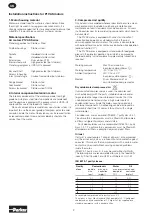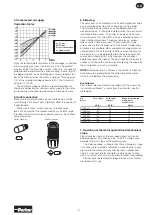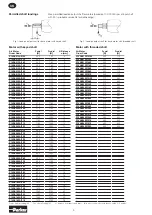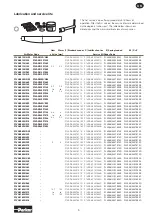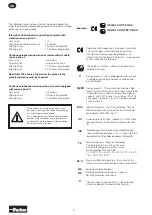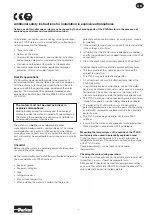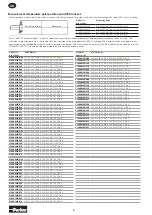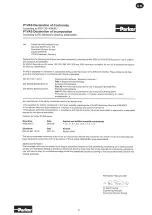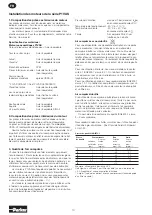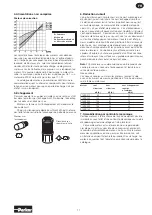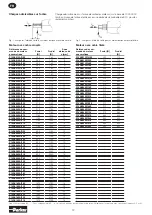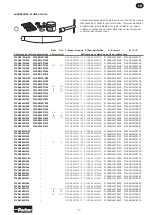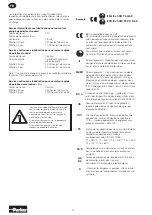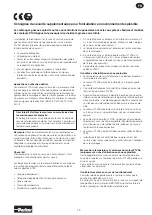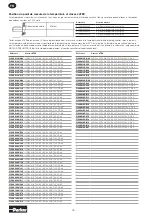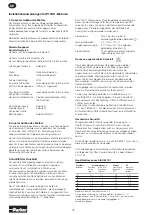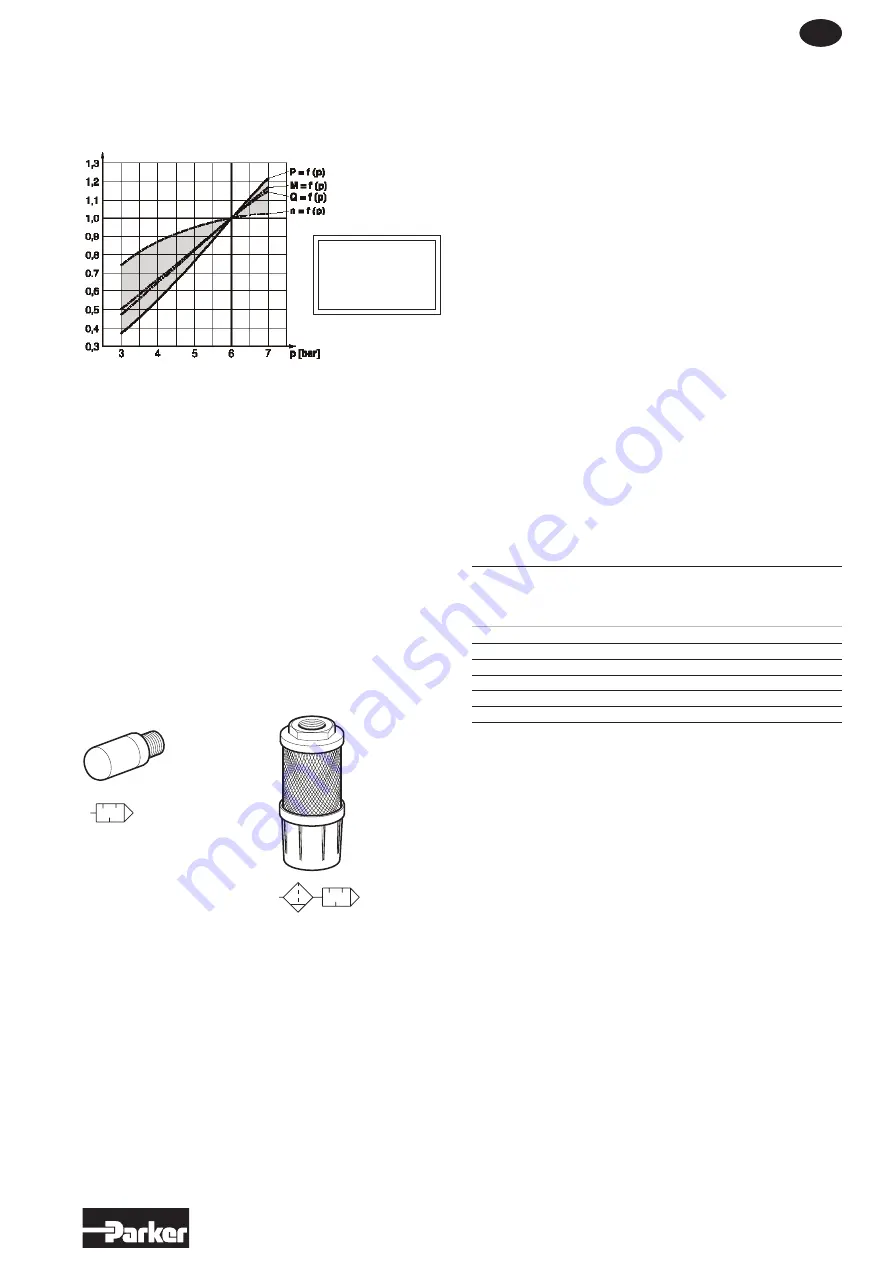
3
UK
Correction factor
Since the technical data for motors in the catalogue is specified
at 6 bar supply pressure at the inlet port, it is of the greatest
importance that the inlet pipes, unions, valves etc. are correctly
dimensioned to avoid causing a pressure drop. Please refer to
the diagram above to see what happens if pressure drops to 3
bar at the inlet port when the motor is working. This only gives
0.37 of the specified catalogue power (a 300 Watt motor will
only give 111 Watt).
The air motor catalogue contains a recommendation for
choice of components for compressed air supply to the motor,
to prevent pressure drop from adversely influencing its work.
5. Outlet connection
Make sure that water and dirt can not find their way into the
motor through its exhaust port. Preferably direct the air away to
a drier location.
Make sure that you install a silencer, to reduce noise
levels. Make sure that the silencer used has sufficiently large
throughput to avoid restriction and back pressure. Restrictions
cause power loss.
4. Compressed air supply
Sound levels
Sound levels are measured at free speed with the measuring
instrument positioned 1 m away from the air motor, see the
table below
Air
Free outlet
With outlet
Exhaust air removed
motor
silencer
with pipes to
another room
dB
(A)
dB
(A)
dB
(A)
P1VAS 012
99
92
70
P1VAS 020
100
88
71
P1VAS 030
103
91
70
P1VAS 060
103
94
76
P1VAS 090
106
88
80
P1VAS 160
108
95
87
7. Operation of the motor against fixed mechanical
stops.
Please note that some of the low speed motors can not be
operated against a mechanical stop, since this would cause
damage to the last stage of the planetary gear.
The motor package is stronger than the last planetary stage.
It is not possible to provide protection by reducing the supply
pressure to the motor. It must either be used in applications
where it is not possible for the motor to work against a fixed
stop or a safety clutch must be installed to prevent overloading.
Please check the technical catalogue to see which motors
are limited in this way.
P = Power
M = Torque
Q = Air consumption
n = Spindle speed
6. Silencing
The noise from an air motor consists of both mechanical noise
and a pulsating noise from the air flowing out of the outlet.
The installation of the motor has a considerable effect on
mechanical noise. It should be installed so that no mechanical
resonance effects occur. The outlet air creates a noise level
which can amount to 108 dB(A) if the air is allowed to exhaust
freely into the atmosphere. To reduce noise levels, various
types of outlet silencer are used. The most common type
screws directly into the outlet port of the motor. A wide range
of silencers are available. Many are made of sintered brass or
sintered plastic. Since the motor function causes the exhaust
air to pulsate, it is a good idea to allow the air to exhaust into
some kind of chamber first, which reduces the pulsations
before they reach the silencer. The best silencing method is to
connect a soft hose to a central silencer allowing the speed of
the air to reduce as much as possible.
NOTE!
Remember that if a silencer is too small or is blocked,
back pressure is generated on the outlet side of the motor,
which in turn reduces the motor power.
Outlet silencer
Central silencer


